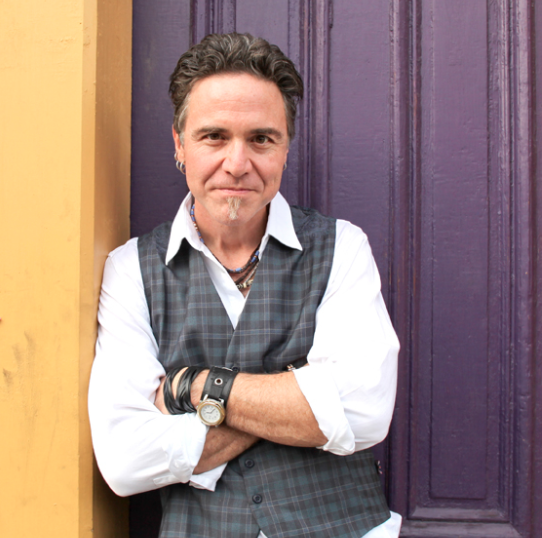On writing novels, for TV, and film
Within media, whether it’s books, TV, film, or even video games, diversity has been slowly but surely changing for the better. How do the creators of these different mediums feel? How have they contributed to diversity within their work? Horror writer, Jay Bonansinga, and I discussed this one day over the phone.
Jay is probably one of the nicest horror writers you’ll come across; a very friendly guy who also happens to know how to give you a mini-heart attack. As a New York Times bestselling author with twenty-five novels under his belt, eight of those include the infamous The Walking Dead novels, he is one to admire. With as many books as he has, there are so many different characters to get to know and so many stories to be told.
From his first novel, The Black Mariah, featuring Lucas Hyde, an African-American man and Sophie Cohen, a Jewish woman, to his YA novel, Lucid, with Lori Blaine, a Goth teenage girl, to the infamous Lilly Caul in The Walking Dead books, Bonansinga has written some diverse stories within the horror genre.
Whether it’s The Walking Dead novels, or Lucid, or any of your other novels, how do you feel they have contributed toward diversity in literature?
Well, it’s always been a part of my big theme, really. I’m not really sure if I can define what the themes of my books truly are, because I don’t think that’s even a role for an artist to talk about, or what themes they’re exploring. I won’t try to do that but I will say that when I was in school, I had some really good teachers.
They were not only progressive and all in favor of inclusivity and using all cultures and exploring all cultures and ways of life in literature but, they were also really cool about letting their students write about whatever they wanted to. Because you hear this phrase, “Write what you know” a lot, and I get it. I understand where it comes from, but if we who write fantasy took that to heart and took it literally, we would not be able write about outer planets, other worlds, other dimensions, ghosts, vampires, or zombies—I had some reallygood teachers.
The first book I wrote was The Black Mariah and on the surface it was a horror, fantasy, supernatural thriller but beneath the surface the two main characters were black and Jewish and their grudging relationship – an African-American man and a Jewish woman – and they really loved each other but they denied it and fought it and I realized that this was what was driving the horror story. I realized it was connected – the African-American man and the Jewish woman. From that point on I tried to use race, and sexuality, and sexual preference – all that stuff in my books, which is probably another reason why I resonated for [Robert] Kirman in The Walking Dead. Because, what I did in a broad general sense for The Walking Deadwas basically flesh out this woman, Lilly Caul.
You know, just take this character of Lilly Caul from the comic book who was an unknown quantity. Nobody really knew where she came from, nobody knew anything about her. She shows up in the comic book and she’s only in the comic book for about. . .maybe a dozen panels and that’s it. And she kills The Governor; she comes in and changes the whole mythology of The Walking Dead and then she vanishes. And so, as a male writer I get what most people would say, “Oh, I don’t really have the capability of doing that, of creating this really three-dimensional, richly crafted female character” because in school they told me to “write what I know,” you know? And I’m a man, I’m not a woman, you know? How the hell would I know? And you have to have the courage to do that.
I was in college when I sold my first short story to a professional market and actually got paid. When I got the acceptance letter, the editor who was a woman, Peggy Nadramia, one of the great horror editors, said, “Yeah, I’m really happy to tell you I’m gonna buy this story for my magazine, Grue, and just in case, your initials…” (Because at that time I just went by my initials; I was just J. R. Bonansinga). “In case your initials mask a female gender, we’re having a future issue called, ‘Women in Horror’, and we’d love you to submit that.”
And I’m like, “Okay, I think I can do this. This is good.” Because my first published story was about a mother and a grandmother and how their relationship was with their childand you know, I was writing about women. I was using my imagination and women from my own life.
I’m not even sure if I’m answering your question [laughs].
No, no, you definitely are.
But it’s huge. I mean it’s huge for most of the great horror writers. The great horror writers are really into this kind of utopian view of the universe in many cases, you know? There are George Romero movies like Night of the Living Dead, Day of Dead, Dawn of the Dead. They usually end up with a group of people of all races and creeds and colors and sexuality. And I think that influenced Kirkman to create The Walking Dead which, also, that’s the strength of The Walking Dead is that, The Walking Dead is about stripping away all the prejudices and norms of civilization until all you have is just the primal survival.
So, there are really no more color boundaries, you know, there really are no racial issues anymore. It’s all about survival and that appeals to a lot of people. I think we have so many fans and it’s impossible to say what the average fan is of The Walking Dead. They’re all over the map. They’re every color, every race. They’re grandmothers, they’re little kids, they’re entire families. It has that feel to it and I think horror is one of those genres that’s just super, super, primordial. Just seminal, that’s essentially human behavior and extreme, you know? I think it appeals to a wide range of people so you see a wide range of heroes and characters in horror.
I mean, there’s a lot of women horror writers that have shaped the whole genre. I’ve always thought that. I’ve been helped along the way by women just as much as men. Tina Jens is a woman that mentored me and helped me. Then there are others like Nancy Collins, who’s a great, goth, cool, hipster, horror writer and I was always a huge fan of hers and I got to meet her and get to know her a little bit. I’m sorry that’s a really long answer to your question [laughs].
No, that’s great. That actually leads into my next question which is, who are some authors you admire that you feel have helped with diversity in literature?
Harlan Ellison is another guy that really influenced me and helped me and when I got to know him, I learned so much from him. Peter Straub, is another guy that I’ve read and admired and when I got to know him he helped me out. God, there’s so many. I mean, you have to be a big reader if you’re going to be a professional writer, I always thought.
While diversity is becoming more and more apparent in literature and in other forms of media, creators have to keep pushing forward in that movement. Writers, of course, need to write more diverse plots and characters, but what do you suggest readers do to bring more awareness to diverse characters in speculative or horror fiction? Or what have they done to support these stories?
This is a fascinating question. I think readers already bring diversity through their own experiences. They overlay a template of their own culture that often enhances the reading process. Because the bottom line for all readers is that they complete the imagery and feelings in their own psyches.
For readers to get the opportunity to support, publishers have to first accept said stories. How can we get publishers interested in these stories without them complaining that it’s “not relatable”? I’ve heard this to be the case on why stories aren’t published sometimes.
I’ve always believed that the more specific a story is – or “diverse” – the more universal it is. And I think the best publishers know this, and act on this, and are attracted to diverse stories. I think it was Duke Ellington who said, “There’s only two kinds of music…good music and bad music.” I think the same applies to stories.
Interview by Courtney Gilmore
Jay Bonansinga’s latest Walking Dead novel, Return to Woodbury, is out now. See the dynamic Lilly Caul in action and look out for future novels from Jay Bonansinga. Meanwhile, think of ways you as a reader can support more diverse works and if you’re a creator, help bring those diverse stories into fruition, so the change keeps growing and growing just as Bonansinga has done with his works.

